Holiday Web Reading
I enjoy reading and one of the rules of all well-behaved reading enthusiasts—much like vegans, cross fitters and people who eat gluten free—is to never stop telling everyone we know (and even some people we don’t know) about it.
I hadn’t read very many industry books this year, but the second half of the year was absolutely bursting with great options and I couldn’t resist. Here are a list of the ones that I’ve found time to read and highly recommend.
Adaptive Web Design, 2nd Edition by Aaron Gustafson
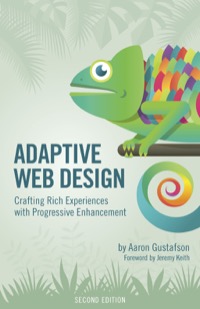
But the second edition of Adaptive Web Design isn’t just a minor update—it’s a completely new take on the topic. While I would have been hard pressed to imagine it happening, Aaron somehow managed to write an even better guide to progressive enhancement.
You see, being told a specific way to code—a specific technique or snippet—that can have some short term value. But what’s more important is thinking about the underlying philosophy and the values that guide those decisions. While techniques come and go, those guiding principles persist. Understanding them at a deep level will help guide you as things change, helping you to make appropriate decisions about how to wield new technology as it emerges.
That’s what Aaron provides here. While there are some specific examples of how you could layer enhancements onto your site, most of the book is focused on helping you understand the underlying principles of progressive enhancement—principles that will help guide your decisions long after you’ve read about them.
I contributed an early quote about the book after I read it through which sums up my thoughts much more concisely than these last few paragraphs:
Adaptive Web Design should be one of the first books on the shelf of anyone building for the web. Showing a deep understanding of the web, Aaron manages to cram nearly 20 years of insight into a book that is an absolute pleasure to read. I dare you to try and read this book without a highlighter handy.
The book isn’t out until early December, and you should absolute pick up a copy when it’s available. I can’t recommend it highly enough.
Using WebPageTest by Rick Viscomi, Andy Davies & Marcel Duran
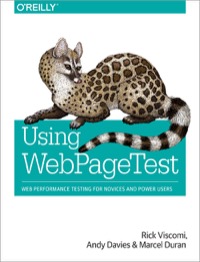
With all the power WebPageTest provides, there was a huge need for a comprehensive guide to getting the most out of it. Now we have one—a very good one at that. The book walks through how to read waterfalls (useful for any performance tool), how to test for single-points-of-failure (SPOF), how to use API’s to drive WebPageTest, how to setup a private instance and much more (including some undocumented power features).
No matter how much (or how little) you think you know about WebPageTest, you’ll walk away from this book with a few new tricks up your sleeve.
Going Responsive by Karen McGrane
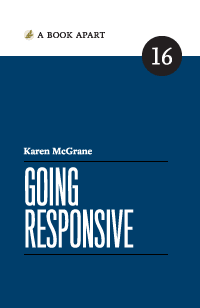 Karen is one of those people who has a really wide range of knowledge about what it takes to design and build sites. Going Responsive demonstrates this very clearly. Karen uses her plethora of experience to provide practical advice throughout the process of a responsive project—from selling a responsive project all the way through testing and measuring its impact.
Karen is one of those people who has a really wide range of knowledge about what it takes to design and build sites. Going Responsive demonstrates this very clearly. Karen uses her plethora of experience to provide practical advice throughout the process of a responsive project—from selling a responsive project all the way through testing and measuring its impact.
Unsurprisingly, I’m particularly fond of the chapter about emphasizing performance in a responsive project. She does a great job of walking through building a case for performance and how to get started with a performance budget.
Karen’s book isn’t going to get super technical—she’s approaching the topics from a higher level which means the audience of people who would benefit from reading this is pretty broad. Going Responsive needs to be read by anyone planning to build a responsive site—designers, developers and (perhaps especially) management. As Karen points out in the introduction, successfully implementing a responsive design requires much more than design and development. It “requires a new way of solving problems and making decisions.” This book is a wonderful guide to help you make that shift.
Responsive Design: Patterns and Principles by Ethan Marcotte
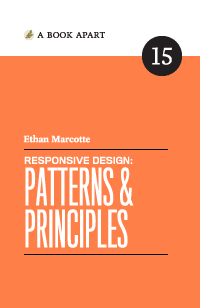 When I grow up, I want to write as well as Ethan does. His style of writing is just so pleasant: conversational, informative and entertaining.
When I grow up, I want to write as well as Ethan does. His style of writing is just so pleasant: conversational, informative and entertaining.
He also, as it turns out, knows a little bit about this whole responsive design thing. Ethan’s pulls from a ton of experience to write an extremely useful book here. Using real-world examples, he walks you through common patterns for navigation, images and video—even advertising.
He takes the time to carefully analyze each potential solution, exposing the benefits and disadvantages of each. Approaching the topic this way makes sure that you not only walk away with concrete ideas for how to navigate some of responsive design’s trickier bits, but you thoroughly understand all the potential trade-offs.
It’s a perfect compliment to Karen’s book, not to mention Ethan’s original book on the topic and Scott’s excellent book from last year.
Building a Device Lab by Destiny Montague and Lara Hogan
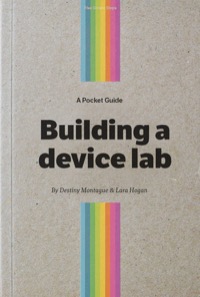
Lara and Destiny give wrote a wonderful little guide to setting up a device lab that is equally good for companies of all sizes. They walk through everything you could possibly want to know—and probably more. Few people consider, for example, how to keep things charged appropriately and that topic gets its own chapter here.
When I was working with companies, before we started doing any design and development I often helped them get a solid device lab in place. Had this book been around then I would’ve been handing it out to every single one of them.
Designing for Touch by Josh Clark
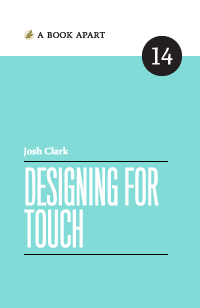 First off, a critique: while there are many touch-based puns in this book, I did not see a single pun based on Neil Diamond’s Sweet Caroline. That feels like a missed opportunity and frankly I’m a little disappointed.
First off, a critique: while there are many touch-based puns in this book, I did not see a single pun based on Neil Diamond’s Sweet Caroline. That feels like a missed opportunity and frankly I’m a little disappointed.
Putting aside my love for Neil Diamond, the rest of Josh’s book is spot-on. I love how Josh weaves seamlessly back and forth between the why and the how: here’s why this is the case, now here’s a practical way for you to design based on that knowledge.
The book ends up being a mini-master class about designing for touch and gestures. You learn about the ideal locations for making controls easier (and harder in some cases) to get to, how to help with discoverability, how to minimize response times and how to rethink traditional input types to make things easier for people and their “clumsy sausages” (Josh’s words, not mine).
The level of knowledge here is impressive—Josh knows this stuff inside and out, and he manages to explain the topic in a way that is both concise and fun.